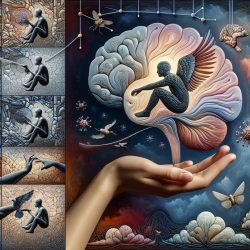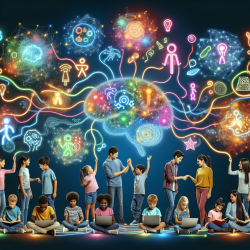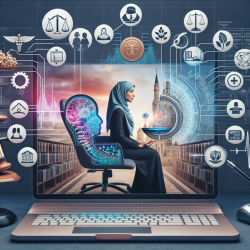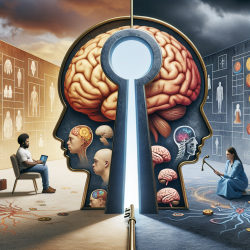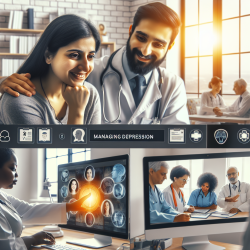Unlock the Secret to Enhanced Therapy Skills with the BrainMind's Flights and Perchings!
As a Special Education Director, you are constantly seeking ways to improve the therapy services provided to students. The research article "Flights and Perchings of the BrainMind: A Temporospatial Approach to Psychotherapy" offers groundbreaking insights that can enhance your practice. This article introduces the Temporospatial Movements of Mind (TSMM) model, a process-oriented framework that aligns with neuroscience to improve psychotherapy outcomes.
Understanding the Temporospatial Movements of Mind (TSMM) Model
The TSMM model is based on the concept that brain activity and emotional experiences develop over time and space. It describes seven temporal movements that guide the maturation of emotional feelings and thoughts. These movements are:
- Neuroecological
- Affect-Soma
- Protothought-Image
- Associative-Non-linear
- Linear-Concrete
- Abstract-Relational
- Merging-Integration
By understanding these movements, therapists can better conceptualize where patients are in their cognitive and emotional development, allowing for more targeted and effective interventions.
Applying the TSMM Model in Practice
Implementing the TSMM model in your practice can lead to improved therapy outcomes. Here are some ways to apply the model:
- Neuroecological Movement: Focus on early life experiences and their impact on current behavior. Use techniques like dream analysis to uncover unconscious processes.
- Affect-Soma Movement: Address primary emotional experiences and somatic impulses. Techniques like sensorimotor psychotherapy can help integrate physical and emotional states.
- Protothought-Image Movement: Utilize mental imagery to contain emotions and facilitate insight. Encourage patients to explore spontaneous images and their meanings.
- Associative-Non-linear Movement: Foster creative thinking and free association to explore self-referential processing and social cognition.
- Linear-Concrete Movement: Develop logical thinking and reasoning. Encourage patients to organize thoughts and make connections between past experiences and current behaviors.
- Abstract-Relational Movement: Facilitate the development of abstract thinking and social cognition. Use techniques like mentalization to help patients understand different perspectives.
- Merging-Integration Movement: Integrate insights and apply them in real-world situations. Encourage patients to test new behaviors and consolidate learning through experience.
Encouraging Further Research
While the TSMM model provides a comprehensive framework for understanding cognitive and emotional development, it is essential to continue exploring its applications. Encourage your team to engage in further research and attend conferences, webinars, and workshops to stay updated on the latest developments in psychotherapy and neuroscience.
To read the original research paper, please follow this link: Flights and Perchings of the BrainMind: A Temporospatial Approach to Psychotherapy.
